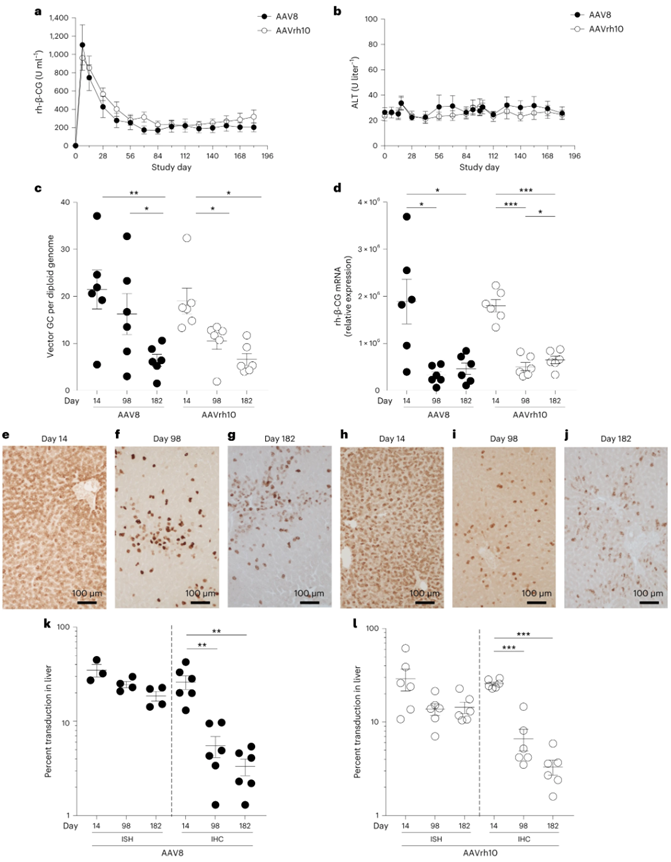• Adenovirus Service • AAV Service • Lentivirus Service • Retrovirus Service




β2-microglobulin (B2M) is an important component of MHC class I molecules that can present tumor antigens to T cells. Loss of B2M leads to acquired tumor resistance to immune checkpoint blockade (ICB) therapy. However, there are now well-documented cases of B2M-inactivated tumors responding to ICB, which may demonstrate how the body's anti-tumor immune response is generated in tumors that do not have MCH class I molecules on their cell surfaces.

Researchers from Aarhus University in Denmark published a research paper titled "Enhanced production of mesencephalic dopaminergic neurons from lineage-restricted human undifferentiated stem cells" in the journal Nature Communications. This study constructed lineage-restricted undifferentiated stem cells (LR-USCs) by knocking out the transcription factors GBX2 and CDX1/2/4 in human pluripotent stem cells. These stem cells have a greater ability to generate specific nerve cells, dopaminergic neurons, and have produced stronger and longer-lasting therapeutic effects in rat models of Parkinson's disease.

Benjamin Kleinstiver's team at Harvard Medical School and Massachusetts General Hospital published a research paper titled "Optimization of base editors for the functional correction of SMN2 as a treatment for spinal muscular atrophy" in Nature Biomedical Engineering.

Professor James Wilson's team from the University of Pennsylvania published a research paper titled "Integrated vector genomes may contribute to long-term expression in primate liver after AAV administration" in the journal Nature Biotechnology. On the same day, Professor James Wilson's team also published a research paper titled "Prevalent and Disseminated Recombinant and Wild-Type Adeno-Associated Virus Integration in Macaques and Humans" in the journal Human Gene Therapy.

The phenomenon of RNA interference (RNAi) is triggered by double-stranded RNA that is homologous to the target gene sequence and is a post-transcriptional silencing process of sequence-specific genes that widely exists in organisms. The endonuclease Dicer in the cytoplasm cleaves dsRNA into siRNA consisting of 21-25 nucleotides, and then the siRNA combines with proteins in the body to form the RNA-induced silencing complex RISC. RISC specifically binds to the homologous region of mRNA expressed by exogenous genes and cleaves the mRNA at the binding site. After being cleaved, the fragmented mRNA is immediately degraded, thereby blocking the post-transcriptional gene silencing mechanism of the corresponding gene expression.

Classical transfection techniques were originally developed to introduce plasmid DNA into cells, and plasmid DNA is still the most commonly used vector for transfection. DNA plasmids containing recombinant genes and regulatory elements can be transfected into cells to study gene function and regulation, carry out mutation analysis and biochemical characterization of gene products, study the impact of gene expression on cell health and life cycle, and produce proteins on a large scale for purification and downstream applications.

Cell transfection refers to the technology of introducing foreign molecules into eukaryotic cells. With the deepening of research on gene and protein functions, transfection has become one of the most commonly used technical methods in scientific research experiments. For cell transfection experiments, transfection reagents, transfection methods, and cell status will all affect the efficiency of cell transfection. This article mainly introduces several factors that affect cell transfection efficiency.

Cell transfection refers to a technology that introduces foreign genes into cells. According to the protein expression process of mammalian cells, cell transfection is required after cell culture is completed, and different transfection methods are selected according to different experimental purposes. At present, commonly used cell transfection methods are mainly divided into three categories: physically mediated (electroporation, gene gun, microinjection), chemically mediated (lipofectamine transfection, calcium phosphate precipitation, cationic lipid transfection, cationic polymer transfection), biologically mediated (virus-mediated transfection, protoplast transfection).

Transfection is an important technology in molecular biology and cell biology research. It allows us to introduce exogenous genes into cells to conduct gene function research, gene expression regulation, or gene therapy. Conventional transfection techniques can be divided into two categories: transient transfection and stable transfection (permanent transfection).

Transfection refers to introducing an exogenous DNA or RNA into target cells and causing it to be expressed or replicated. After transfection, the introduced nucleic acid may temporarily exist in the cell and be expressed only for a limited period of time without replication. It may also exist stably and be integrated into the genome of the recipient cell and replicate together with the host genome replication. Transfection is often used in biological research. It can be used to introduce foreign genes, change the proteins or RNA expressed by cells, and study their functions and mechanisms by observing these changes.